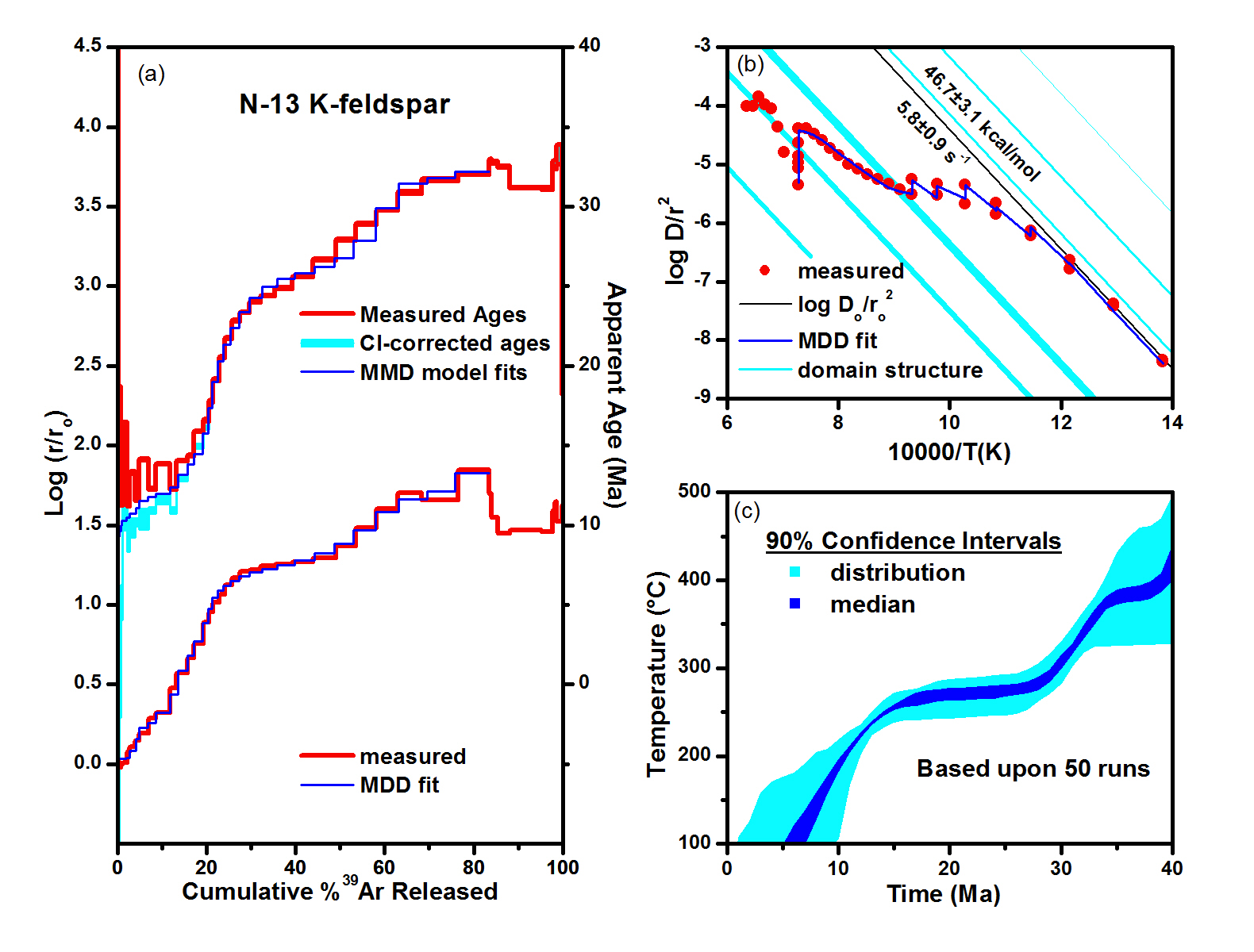The 40Ar/39Ar Multi-Diffusion Domain Method
|
The multi-diffusion domain (MDD) model provides the most meaningful interpretative framework to utilize 40Ar/39Ar step heating measurement from basement K-feldspar to reconstruct the thermal history information recorded by these materials. Observed correlations between age and Arrhenius spectra (Fig. a) show that Ar diffusion occurs by the same mechanisms in nature as in the laboratory. The MDD model (Lovera et al., 1989) provided an internally consistent explanation for the observed laboratory Ar release from K-feldspars showing the irreversible nature of the various Ar retentivities. The MDD model faithfully mimics the gas released at temperatures below the onset of melting and under certain conditions, these data permit the recovery of a unique, cooling history. The multi-diffusion domain (MDD) model (Lovera et al. 1989, 1991) assumes that the characteristic form of the Arrhenius plot and age spectrum in K-feldspars is due to the presence of a discrete distribution of diffusion domain sizes. Thus the form of both plots is a function of the diffusion (E and Do) and domain distribution (domain size, ρ, and volume fraction, Φ) parameters and the form of the thermal history. Thermal history calculations based upon the MDD model begin by estimating the diffusion parameters E and log(Do/ro2) for the K-feldspar in question along with an estimated of the domain distribution (ρ,Φ) obtained through the modeling of the 39Ar released data (Fig. b) using one of the Arrhenius forward modeling programs like the manual version arrme.f or the automatic routines autoarr.f or arrmulti.f . Note that a faithful depiction of the intrinsic structure of K-feldspar is not required to calculate a meaningful thermal history. Once the MDD diffusion model parameters (E, log(Do/ro2)), ρ and Φ) has been constrained, a cooling history (Fig. c) can be reconstructed by forward modeling the measured age spectrum. It is accomplished by iteratively inputting trial cooling histories using the manual routine (agesme.f), or by means of the variational process involved in the automatic routines (autoage-mon.f or agemon_multi.f) (Fig. a). Note that the "equivalent" Cooling histories (i.e. having similar χ2 differences between the model and measure spectra) constrained the thermal history quite well inside the band of retention of the K-feldspar (~150-300°C).We make available a Zip package comprising all the MDD routines (MDD_Programs) we are currently using at our laboratory to model 40Ar/39Ar K-feldspar data along with examples and guides. This package includes the routine used to create the necessary input files from the reduced laboratory tables (MDD_files_lst.f), the routine use to calculated the 90% confident intervals from the set of output equivalent cooling histories (conf_int.f_), and the program that measure the correlation between the measure age spectrum and its associated log(r/ro) Plot (corrfft.f).
|
 |
